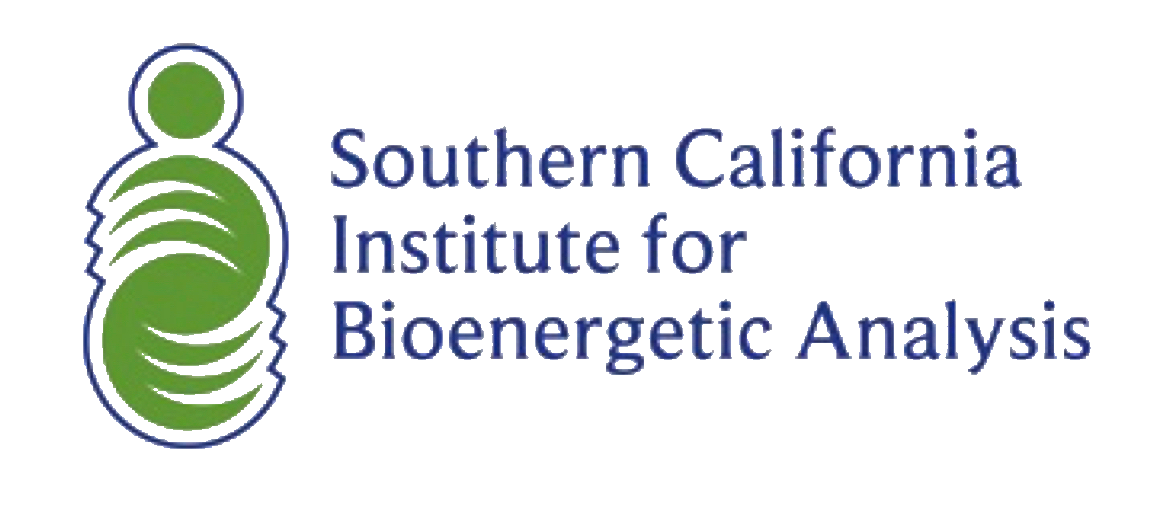
Certification Training Program
“The Bioenergetic Training program was a game changer for how I practice and a life changer for me personally. The depth and complexity of human development and trauma experience which was explored and taught in this program has set me apart from colleagues…and because the program has such a strong experiential component, I have grown and developed as a person in a way that I have deep comfort, confidence, and peace with myself as a therapist.” Ann C. from Michigan
Spring 2027 dates pending:
January 16-17, February 20-21, March at SCBC, April 17-18, May 15-16
Fall 2027 dates anticipated:
August 21-22, September 18-19, October 16-17,
November 20-21, December 11-12
BIOENERGETIC ANALYSIS CERTIFICATION TRAINING PROGRAM
The Southern California Institute for Bioenergetic Analysis offers formal training leading to Certification as a Bioenergetic Therapist (CBT).
At the core of our teaching is the basic understanding that modern Bioenergetics is a somatic relational therapy with relationship being a fundamental component of the therapeutic process. Every therapeutic process occurs within the context of a relationship, which implies that therapy is not just what the therapist does but who the therapist is, in relation to the patient, and that relationship within the therapeutic process is central to the success of the therapy.
The training consists of three essential parts: experiential and didactic formal workshop training; supervision with an accredited supervisor; personal psychotherapy.
The academic portion of the certification program requires a minimum of four years to complete. It is our belief and experience that learning to do deep, careful, sophisticated body-oriented psychotherapy demands the development of a set of skills that include and go well beyond the basic constructs of psychodynamic psychotherapy, requiring extensive rigorous preparation and practice in a learning setting.
FIRST AND SECOND YEAR = PRE-CLINICAL PHASE
SCIBA has developed a pre-clinical phase that can be completed over a period of two years (although in many countries this takes three years to complete). The pre-clinical phase is open to individuals who wish to learn more about Bioenergetic Analysis for their own personal growth or who anticipate continuing on to the clinical phase and possible certification. This is a change as now psychotherapists AND people in auxiliary fields can take the pre-clinical phase, including chiropractors, nurses, acupuncturists, etc.
The pre-clinical phase of the IIBA training curriculum focuses on:
The Fundamentals of Bioenergetic Analysis
The Process of Human Development
Character/Personality Development
First Year
A review of the general principles of psychodynamic psychotherapy, and an explication of the changes and additions in theory and practice that are now a part of Bioenergetic Analysis begin this dynamic training. Basic concepts that underlie this approach to psychotherapy include: the unity of mind and body in a somatopsychic whole; energetic processes as the basis of all psychic and emotional functioning; basic concepts of defense, character organization, and interpersonal functioning, i.e., attachment, internalized object relations, transference and countertransference.
Second Year
Developmental processes in personality formation using the understanding of character organization developed by Reich, elaborated by Lowen, and developed further by other theorists in Bioenergetic Analysis. The basics of Bioenergetic technique which includes learning to recognize patterns of attitude and defense in body posture and muscular holding patterns, and related emotional and cognitive organizations. Preliminary study of technique includes learning methods for activation, regression, cathartic enactment, and the timing of active techniques, all in the framework of the therapeutic alliance, and contained by the therapeutic space. Guidance and the initial development of the therapist’s ability to tolerate and work with strong emotional expression begins.
THIRD AND FOURTH YEAR = CLINICAL PHASE
In the introduction to the clinical phase we find it important to clarify what kind of therapeutic change and development we are working for in Bioenergetic Analysis. This is best done by answering the question, “What heals,” or “What is the core of the therapeutic change in Bioenergetic Analysis?”Exploring the model of treatment used in Bioenergetic Analysis, the physical interventions taught, and the role of empathic resonance in the therapeutic process shows that the therapeutic change is understood as a transformation that takes place within the client and therapist and within the relationship.These changes occur at emotional, psychological, physical and, depending on the culture also transpersonal levels within the client and in the relationship between client and therapist.As the process evolves, the client learns to experience more bodily aliveness, build capacities for deeper and more authentic relationships, and gain a wider and more flexible manner of self-expression.Therapeutic change usually occurs in stages in long-term therapy.
Third Year
This begins the expansion of the conceptual-experiential framework developed during the first two years and applies them in the clinical setting by examining the process of sessions conducted during, or along with the workshop sessions. Candidates begin supervision with a recognized supervisor. Focus is on the evolution of the therapeutic relationship in a psychotherapy that includes touch, strong emotional expression, and moments of intensive engagement by the therapist. The nature and significance of transference and its manifestations are a central theme during this year, as is the beginning development of a therapeutic style that includes alternations of activity and receptivity on the part of the therapist in a body-oriented psychotherapy.
Fourth Year

